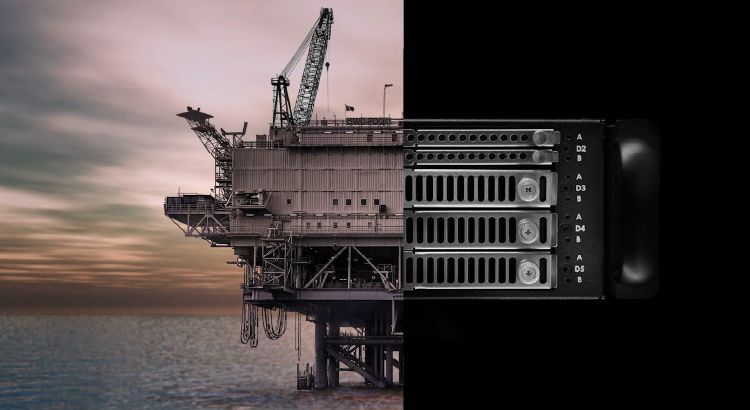
Accelerating AI at the Edge for Large-Scale Analytics
Mercury Systems
October 29, 2020
The explosion of big data has driven the need for utilizing artificial intelligence to break through “data noise,” process and analyze data efficiently, and return actionable information. In addition, there is a growing demand to take this processing out of the data center and bring it to the edge for faster critical insights. Listen in to find out how Mercury and NVIDIA are working together to deliver the latest commercial technologies in trusted, secure mission-critical systems for aerospace and defense applications.
Ralph Guevarez:
Hello, and welcome to Mercury Now, a podcast series brought to you by Mercury Systems. I am your host, Ralph Guevarez. I’m very excited about today’s topic: Enabling AI Large-Scale Analytics through Mercury and Invidious Technologies. Joining me is Lance Brown, Director of Business Development for Mercury Systems, and our guest today, Jason Tichy, Senior Data Scientist for NVIDIA. Lance, Jason. Good day, and welcome to you both.
Lance Brown:
Great to be here.
Jason Tichy:
Hi Ralph. Thanks for having us.
Ralph Guevarez:
So before we begin, could you please give our listeners a brief background on your current roles. Lance, we’ll start with you please.
Lance Brown:
Hi, I’m Lance Brown and I work in our Advanced Technology Group and I’m currently working on edge applications using NVIDIA’s latest GPU’s and NVIDIA’s machine learning solutions.
Ralph Guevarez:
Jason,
Jason Tichy:
Thanks Ralph. My name’s Jason Tichy. I’m a Senior Data Scientist on NVIDIA’s Federal Solution Architecture team. My main research involves deploying AI, ML and HPC algorithms at the extreme edge. This involves using our embedded and system on module products.
Ralph Guevarez:
Thank you both for the updates. So gentlemen, why is AI needed for Large-Scale Analytics? Jason, we’ll start with you please.
Jason Tichy:
Well, Ralph, I really think it’s this explosion of big data that we’ve seen lately that drives this need for Analytics. Just the last two years alone. 90% of the world’s data has been created. Every day 306.4 billion emails are sent. Over five million tweets are made. The exponential bump that 5G will bring with its ability to cover one million devices in just a square kilometer. This is going to further drive that data growth.
Lance Brown:
That’s a great point. Jason, just add a little bit to it. The volume and complexity of data has grown at such a rate that again, the longer be analyzed, but traditional human means as a world data approaches Yoda Scales, a Yoda for your point is 10 to the 24th. It’s becoming harder and harder to break through the data noise and find useful information. AI is a means by which we can process and digest that efficiently to get timely insights that would otherwise be impossible to obtain. This is important as making a correct decision too late is a wrong decision.
Ralph Guevarez:
Thank you gentlemen. So what you are saying is, missions which seemed impossible before can now be possible because we can use AI to utilize all that data. Now, why not perform Analytics using cloud computing? Why is it needed at the edge? Lance, we’ll start with you.
Lance Brown:
That’s a good question. So growing volumes of data require machine learning be executed at or near the point of injured. AI is a feud heavy application that can easily exhaust processing resources. Traditionally, these resources reside in benign environments like a data center, which is hooked up to the cloud. However, there is so much data being generated, then sending it back to the data centers often and practical.
Jason Tichy:
To build on Lance’s point and reinforce it. Moving Analytics to the edge is all about reducing latency to get those real time insights. Data analysis is only as fast as your slowest piece of IT infrastructure. At the edge that bottleneck is networking. Edge devices allow analysis to be done on local devices without needing to traverse that network. It also increases security as no one can listen in.
Ralph Guevarez:
Thank you. So if I’m understanding this correctly, by running AI on edge infrastructure in remote locations, near the data, you can get faster data insights, understood. How are NVIDIA and Mercury collaborating to deliver AI capabilities to the tactical edge? Jason, your thoughts.
Jason Tichy:
NVIDIA really revolutionized parallel computing when it invented the GPU in 1999. GPU’s are built to run intensive tasks and massive parallel processing units that have thousands of cores. This reduces your time for numerical compute and reduces overall latency. For instance, our newest A100 Tensor Core GPU, for example, demonstrated the fastest performance per accelerator on multiple benchmarks. NVIDIA’s EGX is a cloud native scalable software technology that enables IT to quickly and easily provision GPU servers. We work really closely with Mercury as they enhance our GPU’s and add to our software stack technologies and make them ready specifically for aerospace and defense applications.
Lance Brown:
That’s right, Jason. So Mercury Systems is the leader in making trusted, secure, mission critical technologies profoundly more accessible to aerospace and defense. As an NVIDIA partner with early access to new technologies, we align our product development with NVIDIA’s roadmap to deliver the most advanced AI enabling technologies to our customers.
Ralph Guevarez:
Thank you both. Now, what should our customers be thinking about when selecting a system to deploy AI at the edge? Lance, please,
Lance Brown:
There’s lots to think about, but efficiency can take a hit as you integrate Edge Systems. Pre-integrated solutions are better as every integration step can introduce latency. Edge Systems must be compact, reliable, scalable, secure, and fast to mitigate risk and fit anywhere. It’s important to have reliable systems running. These workloads as failure is often not an option.
Ralph Guevarez:
Jason, your thoughts,
Jason Tichy:
There are many tools and capabilities available today that can streamline AI Analytics and make the data easily digestible. However, as Lance just said, they must be properly integrated to drive real-time insights at the edge. And the edge is where performance per watt is extremely critical. It’s important to align our product roadmaps and strategies as that will streamline the development of cutting edge solutions that maximize your AI efficiency.
Ralph Guevarez:
Thank you gentlemen. As we heard today, AI is a complex problem. It requires hardware solution providers such as NVIDIA and Mercury to work hand in hand with defense and aerospace system architectures to build knit together solutions that accelerate AI Analytics. Lance, Jason, thank you both for joining me today. I wish you the best of luck moving forward. God speed. And I look forward to having you both on the show again soon. Thank you.
Jason Tichy:
Thank you.
Lance Brown:
Thank you.
Ralph Guevarez:
This has been another edition of Mercury Now, a podcast series brought to you by Mercury Systems. I am your host, Ralph Guevarez. Signing off.








 Military & Aerospace Electronics 2020 Innovators Awards
Military & Aerospace Electronics 2020 Innovators Awards Three Ways Mercury and SigmaX are Securing Machine Learning at the Edge with NVIDIA EGX
Three Ways Mercury and SigmaX are Securing Machine Learning at the Edge with NVIDIA EGX